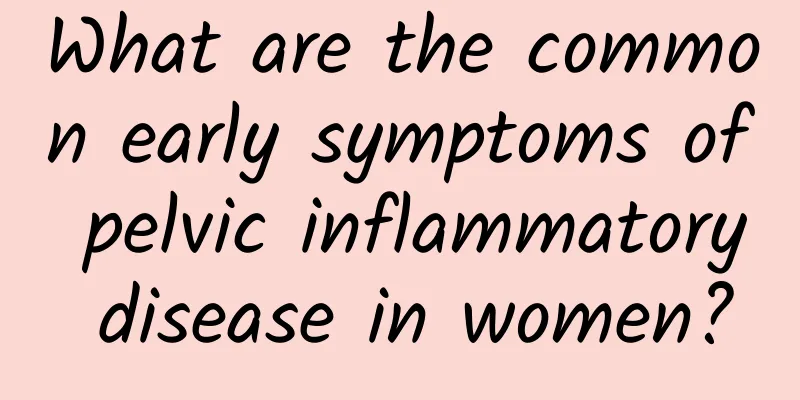Experts briefly analyze the common symptoms of uterine fibroids

|
Some of the symptoms of uterine fibroids are relatively common and are common in most patients with uterine fibroids. Therefore, female friends must have a correct understanding of these symptoms of uterine fibroids so that they can seek medical treatment in time when the disease occurs. What are the common symptoms of uterine fibroids ? The following is a list of common symptoms of uterine fibroids. In general, common symptoms of uterine fibroids include: 1. Vaginal bleeding Some patients with uterine fibroids will experience vaginal bleeding, mainly intramural fibroids. Patients will also have prolonged menstruation, some patients have menstruation for about 15 days, or even longer, and the cycle is shortened. Generally, there is no irregular vaginal bleeding. However, symptoms of the submucosal uterus appear early and are severe. If combined with infection ulcers, irregular vaginal bleeding may occur during necrosis, causing great pain to the patient. This is a common symptom of uterine fibroids. 2. Compression and dysuria. If the uterine fibroids are relatively large, they will generally cause symptoms of compression. For example, when the fibroids grow toward the anterior wall of the uterus and reach a diameter of about 8-10 cm or larger, they can compress the bladder and cause urinary urgency, frequent urination, and even urinary retention. When they grow on the posterior wall of the uterine body, they can cause retroversion and retroflexion of the uterus (the cervix shifts forward or grows inside the cervix), resulting in constipation. Broad-band fibroids can compress the ureter, leading to hydroureter and hydronephrosis, resulting in dysuria. 3. Pain. Most patients do not feel pain, but a small number may feel such pain. When the pedicle of a subserosal fibroid is twisted, it can cause acute abdominal pain. When a submucosal fibroid stimulates uterine contractions, spasmodic pain may occur. When the fibroid becomes red and cystic, it can cause severe abdominal pain. The symptoms of uterine fibroids are often accompanied by gastrointestinal symptoms and fever. When combined with endometriosis, some patients may experience lumbar pain. The above is a brief analysis of the common symptoms of uterine fibroids, I hope it will be helpful to everyone. If you have symptoms of uterine fibroids, you must go to the hospital for treatment in time to avoid missing the best time for treatment and causing serious harm to the patient. |
<<: The dangers of uterine fibroids that everyone needs to know
Recommend
What causes irregular menstruation?
Many female friends do not care much about irregu...
Symptoms of menopause in a 49-year-old woman
Secondly, symptoms of menopause will generally ap...
How many days should I stay in bed after a miscarriage? Experts will show you the answer to this question
The care after a miscarriage is very similar to t...
How to cure irregular menstruation
How can we cure irregular menstruation? Irregular...
The value of ultrasound examination of uterine fibroids
Uterine fibroids are the most common benign tumor...
Introduction to non-surgical methods for treating cervicitis
There are many non-surgical methods for the treat...
Eat only vegetables for dinner to lose weight? Nutritionists teach you how to lose weight
In order to lose weight successfully, you must ha...
Will a woman die if she has amenorrhea?
Will a woman die if she has amenorrhea? Amenorrhe...
What are the precautions for chronic cervicitis?
In modern society, many of our friends are troubl...
How much does it cost to check for uterine fluid?
Uterine effusion is not as terrible as many women...
Suffering from cervical erosion requires treatment
The vast majority of cervical erosions do not req...
What should I do if my menstruation has not come for a long time?
If menstruation is not coming, first exclude earl...
What medicine is better for cervical erosion?
What medicine is better for cervical erosion? Cer...
Three effective methods for treating cervical hypertrophy
With the continuous development of medical techno...
What is the cause of Bartholinitis
For our female friends, Bartholinitis is a very c...









